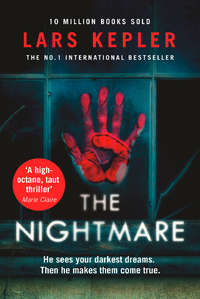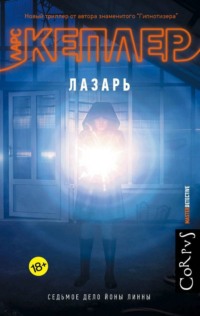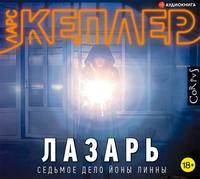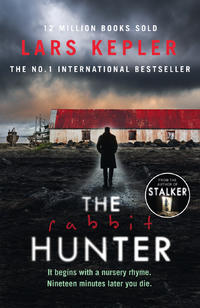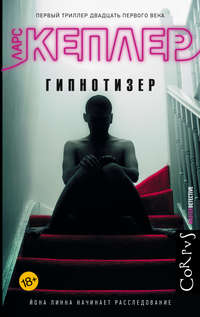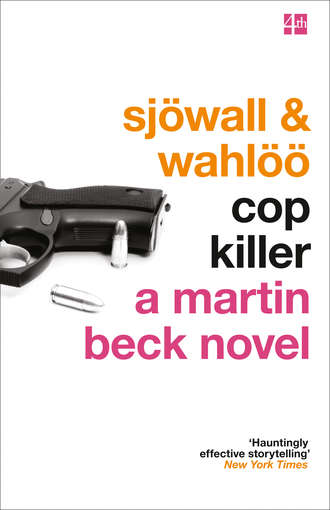
Полная версия
Cop Killer

MAJ SJÖWALL
AND PER WAHLÖÖ
Cop Killer
Translated from the Swedish by Thomas Teal

Copyright
4th Estate
An imprint of HarperCollinsPublishers 1 London Bridge Street London SE1 9GF
www.4thEstate.co.uk
This ebook first published by Harper Perennial in 2009
This 4th Estate edition published in 2016
This translation first published by Random House Inc, New York, in 1975
Originally published in Sweden by P. A. Norstedt & Söner Forlag
Copyright text © Maj Sjowall and Per Wahloo 1975
Copyright introduction © Alexander and Alexandra Ahndoril 2011
Cover photograph © Shutterstock
Maj Sjöwall and Per Wahlöö assert the moral right to be identified as the authors of this work.
A catalogue record for this book is available from the British Library
This novel is entirely a work of fiction. The names, characters and incidents portrayed in it are the work of the authors' imagination. Any resemblance to actual persons living or dead, events or localities is entirely coincidental.
All rights reserved under International and Pan-American Copyright Conventions. By payment of the required fees, you have been granted the non-exclusive, non-transferable right to access and read the text of this e-book on-screen. No part of this text may be reproduced, transmitted, down-loaded, decompiled, reverse engineered, or stored in or introduced into any information storage and retrieval system, in any form or by any means, whether electronic or mechanical, now known or hereinafter invented, without the express written permission of HarperCollins.
Source ISBN: 9780007439195
EPub Edition © 1975 ISBN: 9780007323425
Version: 2016-03-30
From the reviews of the Martin Beck series:
‘First class’
Daily Telegraph
‘One of the most authentic, gripping and profound collections of police procedural ever accomplished’
MICHAEL CONNELLY
‘Hauntingly effective storytelling’
New York Times
‘There's just no question about it: the reigning King and Queen of mystery fiction are Maj Sjöwall and her husband Per Wahlöö’
The National Observer
‘Sjöwall/Wahlöö are the best writers of police procedural in the world’
Birmingham Post
Contents
Cover
Title Page
Copyright
Praise
Introduction
Chapter 1
Chapter 2
Chapter 3
Chapter 4
Chapter 5
Chapter 6
Chapter 7
Chapter 8
Chapter 9
Chapter 10
Chapter 11
Chapter 12
Chapter 13
Chapter 14
Chapter 15
Chapter 16
Chapter 17
Chapter 18
Chapter 19
Chapter 20
Chapter 21
Chapter 22
Chapter 23
Chapter 24
Chapter 25
Chapter 26
Chapter 27
Chapter 28
Chapter 29
Chapter 30
About the Authors
Also by Maj Sjöwall and Per Wahlöö
About the Publisher
INTRODUCTION
It’s dark and snow whirls from the rooftops in a Sweden where everything is perfect. As white as a thick layer of fresh snow on forest and land.
The snow-covered landscape here is an amazing sight, but we Swedish have always been a curious and strangely suspicious people. We want to know what’s hiding under the snow. We need to find out what’s underneath society’s pristine surface.
This need was probably the starting point for the Swedish crime fiction tradition; it all began with a healthy distrust. Because people here have always known that the brightness of summer is followed by winter, that the light is followed by the terrible darkness. And nothing is as it seems – the ice on the lake looks inviting but might be treacherous.
Maj Sjowall and Per Wahloo were both Marxists and they began writing crime novels because they had a burning desire to investigate and influence society. When they debuted in 1965 with Roseanna, the status of Swedish crime fiction was no higher than that of the comic strip.
The crime novel was clever, a bit academic and almost always bone-dry. It had been heavily influenced by British detective stories and their aristocratic heroes – gentlemen who solved puzzles with ice-cold logic.
Sjowall and Wahloo tore down the old curtains in the windows and invited in the dirty contemporary. Their style was closer to the American tradition, but they filled their stories with warnings of society’s dangerous conservatism, political corruption and human greed. In this way, they allied themselves with the people, the common man.
And – perhaps the most brilliant thing about their entire project – they were using a commercial genre to expose society’s hypocrisy and injustice. No one had done anything like this before and their tone had a rawness that made us gasp.
Sjowall and Wahloo made crime fiction a permanent part of our daily lives. It was a great and much needed change, and their novels became almost a movement.
But they might not have changed society as much as they changed the Swedish crime writing tradition. Even now, every Swedish crime writer has to pass Sjowall and Wahloo. They stand like two sentries guarding the genre.
But with a new tradition comes new rules and prohibitions, and the crime novel was soon formularized again. In the decades after Sjowall and Wahloo, a number of imitations had become trapped in that cage. The subversive social criticism sounded more and more mechanical and turned into a kind of alibi. Crime novels were suddenly expected to apologize for the entertaining side of the genre.
We grew up with Sjowall and Wahloo – they were powerful parents. But Lars Kepler is a wayward child, and he had to rebel, to break out and escape from the cage, along with his big brother Stieg Larsson.
Sjowall and Wahloo did not apologize and neither do we. We just love exciting thrillers. We want to combine the old tradition with a filmic pace. For us, this genre presents an opportunity to examine our own fears, to face them and weave them into great stories.
What a writing process is actually like in practice is always difficult to explain. We learn that Sjowall and Wahloo wrote alternate chapters. For them, it was the most creative method, pushing each other forward. Our method is completely different. We write like two people playing the piano together, four-handed. We don’t even write alternate sentences; we do everything together, like one person.
Writing is a way to discuss mankind, our shortcomings and our innate heroism, and for us, the crime genre is an optimistic genre. Only here can you make the world as it should be for a few wonderful hours – the violence ends and the perpetrators are stopped.
Sjowall and Wahloo books were a part of our childhood summers. We would both run to the library for these desirable books and read them during the long, bright summer nights. They were a leap into a whole new world. From childhood stories and into a raw, realistic tradition.
It is no coincidence that their books are mostly set in the summer. The world is bright and beautiful just like Swedish society, but we know that heavy darkness is approaching at a tremendous pace, just as we all know that violence is hiding under the surface.
So many years have passed since first reading their books but it’s a pleasure to meet them again. The storytelling is effective; the suspense is still there. Of course some things have dated; it is not entirely possible to ignore the simplistic rhetoric and the problematic portrayals of women. But on the whole, this dual authorship is unique.
In Cop Killer we find a motive that is as timeless as it is familiar: Death and the Maiden. The book begins with a woman waiting for a bus when a car stops and offers her a ride. As a reader, you know that she shouldn’t step into the car. As it’s Sjowall and Wahloo, the woman is neither young, nor a virgin, but is promiscuous. Her murder is woven together with the manhunt for a young man who steals the wrong car. Sjowall and Wahloo manage to do it again. They knock the world out faster than anyone can pronounce their names.
Alexander Ahndoril and Alexandra Coelho Ahndoril
a.k.a. Lars Kepler
1
She reached the bus stop well ahead of the bus, which would not be along for half an hour yet. Thirty minutes of a person's life is not an especially long time. Besides, she was used to waiting and was always early. She thought about what she would make for dinner, and a little about what she looked like – her usual idle thoughts.
By the time the bus came, she would no longer have any thoughts at all. She had only twenty-seven minutes left to live.
It was a pretty day, clear and gusty, with a touch of early autumn chill in the wind, but her hair was too well lacquered to be affected by the weather.
What did she look like?
Standing there by the side of the road this way, she might have been in her forties, a rather tall, sturdy woman with straight legs and broad hips and a little secret fat that she was very much afraid might show. She dressed mostly according to fashion, often at the expense of comfort, and on this blustery autumn day she was wearing a bright green 1930s coat, nylon stockings, and thin brown patent leather boots with platform soles. She was carrying a small square handbag with a large brass clasp slung over her left shoulder. This too was brown, as were her suede gloves, Her blonde hair had been well sprayed, and she was carefully made up.
She didn't notice him until he stopped. He leaned over and threw open the passenger door.
‘Want a lift?’ he said.
‘Yes,’ she said, a little flurried. ‘Of course. I didn't think…’
‘What didn't you think?’
‘Well, I didn't expect to get a ride. I was going to take the bus.’
‘I knew you'd be here,’ he said. ‘And it's not out of my way, as it happens. Jump in, now, look alive.’
Look alive. How many seconds did it take her to climb in and sit down beside the driver? Look alive. He drove fast, and they were quickly out of town.
She was sitting with her handbag in her lap, slightly tense, flustered perhaps, or at least somewhat surprised. Whether happily or unhappily it was impossible to say. She didn't know herself.
She looked at him from the side, but the man's attention seemed wholly concentrated on the driving.
He swung off the main road to the right, but then turned again almost immediately. The same procedure was repeated, and the road grew steadily worse. It was questionable whether it could be called a road any more or not.
‘What are you going to do?’ she said, with a frightened little giggle.
‘You'll find out.’
‘Where?’
‘Here,’ he said and braked to a stop.
Ahead of him he could see his own wheeltracks in the moss. They were not many hours old.
‘Over there,’ he said with a nod. ‘Behind the woodpile. That's a good place.’
‘Are you kidding?’
‘I never kid about things like that.’
He seemed hurt or upset by the question.
‘But my coat,’ she said.
‘Leave it here.’
‘But …’
‘There's a blanket.’
He climbed out, walked around, and held the door for her.
She accepted his help and took off the coat. Folded it neatly and placed it on the seat beside her handbag.
‘There.’
He seemed calm and collected, but he didn't take her hand as he walked slowly towards the woodpile. She followed along behind.
It was warm and sunny behind the woodpile and sheltered from the wind. The air was filled with the buzzing of flies and the fresh smell of greenery. It was still almost summer, and this summer had been the warmest in the meteorological institute's history.
It wasn't actually an ordinary woodpile but rather a stack of beech logs, cut in sections and piled about six feet high.
‘Take off your blouse.’
‘Yes,’ she said shyly.
He waited patiently while she undid the buttons.
Then he helped her off with the blouse, gingerly, without touching her body.
She was left standing with the garment in one hand, not knowing what to do with it.
He took it from her and placed it carefully over the edge of the pile of logs. An earwig zigzagged across the fabric.
She stood before him in her skirt, her breasts heavy in the skincoloured bra, her eyes on the ground, her back against the even surface of sawed timber.
The moment had come to act, and he did so with such speed and suddenness that she never had time to grasp what was happening. Her reactions had never been especially quick.
He grabbed the waistband at her navel with both hands and ripped open her skirt and her tights in a single violent motion. He was strong, and the fabric gave instantly, with a rasping snarl like the sound of old canvas being torn. The skirt fell to her calves, and he jerked her tights and panties down to her knees, then pulled up the left cup of her bra so that her breast flopped down, loose and heavy.
Only then did she raise her head and look into his eyes. Eyes that were filled with disgust, loathing, and savage delight.
The idea of screaming never had time to take shape in her mind. For that matter, it would have been pointless. The place had been chosen with care.
He raised his arms straight out and up, closed his powerful suntanned fingers around her throat, and strangled her.
The back of her head was pressed against the pile of logs, and she thought: My hair.
That was her last thought.
He held his grip on her throat a little longer than necessary.
Then he let go with his right hand and, holding her body upright with his left, he struck her as hard as he could in the groin with his right fist.
She fell to the ground and lay among the musk-madder and last year's leaves. She was essentially naked.
A rattling sound came from her throat. He knew this was normal and that she was already dead.
Death is never very pretty. In addition, she had never been pretty during her lifetime, not even when she was young.
Lying there in the forest undergrowth, she was, at best, pathetic.
He waited a minute or so until his breathing had returned to normal and his heart had stopped racing.
And then he was himself again, calm and rational.
Beyond the pile of logs was a tangle of fallen branches from the big autumn storm of 1968, and beyond that, a dense planting of spruce trees about the height of a man.
He lifted her under the arms and was disgusted by the feel of the sticky, damp stubble in her armpits against the palms of his hands.
It took some time to drag her through the almost impassable terrain of sprawling tree trunks and uptorn roots, but he saw no need to hurry. Several yards into the spruce thicket there was a marshy depression filled with muddy yellow water. He shoved her into it and tramped her limp body down into the ooze. But first he looked at her for a moment. She was still tanned from the sunny summer, but the skin on her left breast was pale and flecked with light-brown spots. As pale as death, one might say.
He walked back to get the green coat and wondered for a moment what he should do with her handbag. Then he took the blouse from the timber pile, wrapped it around the handbag, and carried everything back to the muddy pool. The colour of the coat was rather striking, so he picked a suitable stick and pushed the coat, the blouse, and the handbag as deep as he could down into the mud.
He spent the next quarter of an hour collecting spruce branches and chunks of moss. He covered the pool so thoroughly that no casual passerby would ever notice the mudhole existed.
He studied the result for a few minutes and made several corrections before he was satisfied.
Then he shrugged his shoulders and went back to where he was parked. He took a clean cotton rag from the floor and cleaned off his rubber boots. When he was done, he threw the rag on the ground. It lay there wet and muddy and clearly visible, but it didn't matter. A cotton rag can be anywhere. It proves nothing and can't be linked to anything in particular.
Then he turned the car around and drove away.
As he drove, it occurred to him that everything had gone well, and that she had got precisely what she deserved.
2
A car stood parked outside a block of flats on Råsundavägen in Solna. It was a black Chrysler with white wings and the word POLICE in big, white, block letters on the doors, bonnet, and boot. Someone who had wanted to describe the vehicle's occupants even more exactly had used tape on the black-on-white licence plate to cover the lower loop of the B in the first three letters, BIG.
The headlights and interior lights were turned off, but the glow from the streetlights glistened dully on shiny uniform buttons and white shoulder belts in the front seat.
Even though it was only 8.30 on a pretty, starlit, not especially chilly October evening, the long street was from time to time utterly deserted. There were lights in the windows of the blocks of flats on either side, and from some of them came the cold blue glow of a TV screen.
An occasional passerby glanced curiously at the police car but lost interest quickly when its presence did not seem to be connected with any noticeable activity. The only thing to be seen was two ordinary policemen sitting lazily in their vehicle.
The men inside the car would not have objected to a little activity either. They had been sitting there over an hour, and all that time their attention had been fixed on a doorway across the street and on a lit window on the first floor to the right of the doorway. But they knew how to wait. They had had lots of experience.
It might have occurred to anyone taking a closer look that these two men didn't really look like ordinary police constables. There was nothing wrong with their uniforms, which were entirely regulation and included shoulder belts and truncheons and pistols in holsters. What was wrong was that the driver, a corpulent man with a jovial mien and alert eyes, and his companion, thinner and slouching a bit, with one shoulder against the side window, both looked to be about fifty years old. As a rule, patrol cars are manned by young men in good physical condition, and where exceptions to this rule occur, the older man is usually paired with a younger companion.
A patrol car crew whose combined ages exceeded one hundred years, as in this case, had to be regarded as a unique phenomenon. But there was an explanation.
The men in the black-and-white Chrysler were merely masquerading as patrolmen. And concealed behind this clever disguise were none other than the chief of the National Murder Squad, Martin Beck, and his closest colleague, Lennart Kollberg.
The disguise had been Kollberg's idea, and was based on his knowledge of the man they were out to try and capture. The man's name was Lindberg, known as The Breadman, and he was a thief. Burglary was his speciality, but he also committed an occasional armed robbery and had even tried his hand at fraud, with less fortunate results. He had spent many years of his life behind bars but was a free man at the moment, having completed his most recent sentence. A freedom that would be short-lived if Martin Beck and Kollberg were successful.
Three weeks earlier, The Breadman had stepped into a jeweller's in the centre of Uppsala, drawn a revolver, and forced the owner to hand over gems, watches, and cash to a combined value of nearly 200,000 kronor. Up to this point, that was all comparatively well and good, and The Breadman could have taken his haul and vanished, except for the fact that a sales assistant suddenly appeared from the inner reaches of the shop, and The Breadman panicked and let fly a bullet that struck the woman in the forehead and killed her on the spot. The Breadman managed to make his escape, and two hours later, when the Stockholm police went to look for him at his girlfriend's flat at Midsommarkransen, they found him in bed. His fiancée maintained that he had a cold and had not left the house in twenty-four hours, and a search produced nothing in the form of rings, jewels, watches, or money. The Breadman was taken in for questioning and confronted with the owner of the shop, who was reluctant to make a positive identification because the robber had worn a mask. But the police felt no such reluctance. In the first place, they could assume that The Breadman was broke after his long stay in prison, in addition to which an informer had told them that The Breadman had mentioned a job he was planning ‘in another city’, and in the second place, there was a witness who, two days before the crime, had seen The Breadman strolling down the street where the jeweller's was located, presumably to reconnoitre. The Breadman denied ever having been in Uppsala and finally had to be released for lack of evidence.
For three weeks now, the police had had The Breadman under constant surveillance, convinced that sooner or later he would visit the place where he had hidden the loot from the holdup. But The Breadman seemed to realize he was being shadowed. On a couple of occasions he had even waved to the plainclothes officers who were watching him, and his single purpose seemed to be to keep them occupied. He clearly had no money. At least he spent none, since his girlfriend had a job and provided him with food and shelter over and above the routine assistance he picked up at the social security office once a week.
In the end, Martin Beck decided to attend to the matter himself, and Kollberg hit on the brilliant idea of dressing themselves up as beat constables. Since The Breadman could spot the most plainly clothed plainclothes officer at a great distance but had always taken a contemptuous and nonchalant attitude towards uniformed personnel, the uniform, in this case, ought to be the best disguise. Such was Kollberg's reasoning, and Martin Beck, with some reservations, agreed with him.
Neither one of them had hoped for any immediate result of this new tactic, and they were pleasantly surprised when The Breadman jumped into a taxi as soon as he realized he was no longer being watched and had himself brought to this address on Råsundavägen. The very fact that he had taken a cab seemed to indicate a certain purposefulness, and they were convinced that something was up. If they could collar him with the stolen goods and maybe even the murder weapon in his possession, that would definitely link him to the crime, and the case would be closed as far as they were concerned.
The Breadman had now been in the building for an hour and a half. They had had a glimpse of him in the window to the right of the doorway an hour earlier, but nothing had happened since then.
Kollberg was starting to get hungry. He was often hungry, and he often talked about losing weight. Every now and then he would go on some new diet, but he generally gave up pretty quickly. He was at least three stone overweight, but he worked out regularly and was in good physical condition. When occasion demanded, he was astonishingly quick and lithe for the size of his body and his age, which was nearly fifty.


